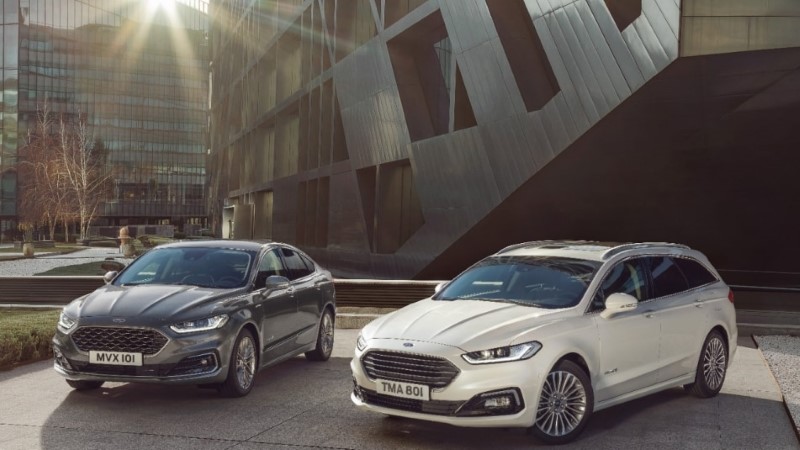Capital allowances on cars is one of those subjects that often surprises people when it comes time to do a corporation tax return.
This is because instead of claiming depreciation as a deduction you have to claim capital allowances and these can often be different to the depreciation you have allowed for in your management accounts.
So what are capital allowances and how do they relate to cars?
- What are capital allowances?
- Annual investment allowance
- First year allowance
- A word about pools
- Annual capital allowances
- Disposing of cars
- A worked example of capital allowances on cars
What are capital allowances?
Capital allowances perform two functions in the tax rules.
The first is to allow people to claim the natural wear and tear that capital assets suffer against their tax bill.
The second is as a way of encouraging companies to invest in better plant and machinery to improve their productivity and by extension, their business.
They are almost the same as depreciation, which companies charge against their P&L in their statutory and management accounts. But not quite.
Of course, this difference means that at tax return time, your accountant needs to add back in any depreciation charged and then make the capital allowances claims, which means that your CT600 (company tax return) may look different from the statutory accounts that you have submitted to Companies House.
There is also an important point to make here.
Cars are treated differently from other assets when it comes to capital allowances, so if you are looking at information online make sure you are looking at the rules for cars and not other assets.
HMRC gives a helpful definition of cars saying that they are;
- suitable for private use – this includes motorhomes
- What most people use privately
- not built for transporting goods
Annual investment allowance
The Annual Investment Allowance (AIA) is an allowance that any business can use each year as a way to offset business investment.
The permanent value of AIA is set at £200,000 but over the last few years, the government has temporarily lifted this value to a ‘super-deduction’ of £1,000,000 as a way of stimulating the economy.
This means that from 1 January 2022 to 31 March 2023 a company can claim up to £1m of capital investment against their tax bills immediately, in many cases wiping out their corporation tax.
Unfortunately, the AIA isn’t available for cars, so why are we mentioning this here?
Well firstly, you have to remember that vans, trucks and commercial vehicles aren’t classed as cars so they are eligible for AIA.
And secondly, zero emission vehicles are eligible, meaning that going green can actually help with your tax bill.
First-year allowance
Another helpful allowance is the First Year Allowance (FYA).
This works in a similar way to AIA in that it allows companies to claim back the full cost of an asset against their tax bill.
The bad news is that again, this isn’t available for cars.
The good news is that it is available for other plant and machinery such as vans and lorries.
You can also claim ‘enhanced capital allowances’ (a type of first-year allowance) if you spend money on electric cars and cars with zero CO2 emissions, electric cars and cars with zero CO2 emissions and electric vehicle charging points.
So you can see that the government is doing all it can to encourage companies to explore low and zero-emission options for their travel.
A word about pools
If you can’t claim AIA or a first-year allowance then you need to think about the pools that your assets are going into.
Pools are a way of categorising your assets and they determine the capital allowances you can use each year.
There are three types of pools;
- main pool with a rate of 18%
- special rate pool with a rate of 6%
- single asset pools with a rate of 18% or 6% depending on the item
So this means that if you have an asset that is in the main rate pool (and you haven’t claimed AIA or FYA) then you can claim 18% of the cost each year against your tax bill.
Cars go into different pools, dependent upon their emissions.
For cars that have high CO2 values (you can find these here), they will go into the 6% special rate pool.
A single asset pool would be useful for assets that have a short life or need to be treated differently but you can’t add cars in here.
For the majority of cars, the main rate pool of 18% is the right one to go for but be aware that there are all sorts of nuances depending upon when you bought the car, whether it was new or used and its emissions value. You can find out more here.
Annual capital allowances
So once you know which capital allowance pool your car is going into you will know the rate you are allowed to offset against tax.
Each year you will be able to claim that amount against tax for that asset as long as you own it and until the value is used up.
But note that capital allowances are charged on a ‘reducing balance’ basis. This means that in the first year you can charge 18% of the cost of the car. In the second year, you would claim 18% of the cost less the 18% you claimed in the previous year. Like this;
| Tax allowance | Asset value | |
| Vehicle cost | 30,000 | |
| Year 1 WDA | (5,400) | |
| Written down value | 24,600 | |
| Year 2 WDA | (4,428) | |
| Written down value | 20,172 | |
| Year 3 WDA | (3,631) | |
| Written down value | 16,541 | |
| Year 4 WDA | (2,977) | |
| Written down value | 13,564 | |
| Year 5 WDA | (2,441) | |
| Written down value | 11,122 |
So we can see that after 5 years we have claimed a total of £18,878 worth of tax allowances and (for tax purposes) our car is valued at £11,122.
Disposing of cars
Now we know that cars don’t last forever so what happens when you come to dispose of your vehicle?
Well, that very much depends upon what you have claimed against tax in the meantime.
Let’s look at what we mean by ‘dispose of’.
HMRC class disposing of a vehicle as;
- selling it
- giving it away as a gift or transferring it to someone else
- swapping it for something else
- getting compensation for it – like an insurance payout if it’s been lost or destroyed
- keeping it, but no longer using it for your business
- starting to use it outside your business
If you claimed 100% of the value using AIA or FYA then you need to add the written down value to your profits for the year you disposed of the vehicle.
You’ll then be taxed on the residual value of the car, as you have already claimed a tax allowance on the whole amount.
If you have the car in the main rate pool then you deduct the written down value from the pool and then assess this based on the money you actually received for the asset.
So using our example above, if we sold the car at the end of year 5 for only £10,000 then we would have made a theoretical loss which gives rise to what is called a balancing allowance that can then be deducted from your tax bill.
If we sold it for £12,000 then we’d get a balancing charge and so our tax bill would go up.
A worked example of capital allowances on cars
So let’s look at an example of this in practice.
We’re going to use a BMW 320i with a purchase price of £34,520. In the first case, the car Goes into the main pool with a WDA of 18%, in the second it goes into our AIA pool.
| Main Pool | AIA/FYA | |
| Vehicle cost | £34,520.00 | £34,520.00 |
| Year 1 WDA | 18% | 100% |
| Year 1 WDA (£) | -£6,213.60 | -£34,520.00 |
| Written down value | £28,306.40 | £0.00 |
| Year 2 WDA | -£5,095.15 | £0.00 |
| Written down value | £23,211.25 | £0.00 |
| Year 3 WDA | -£4,178.02 | £0.00 |
| Written down value | £19,033.22 | £0.00 |
| Year 4 WDA | -£3,425.98 | £0.00 |
| Written down value | £15,607.24 | £0.00 |
| Year 5 WDA | -£2,809.30 | £0.00 |
| Written down value | £12,797.94 | £0.00 |
| Total Tax Allowance | £21,722.06 | £34,520.00 |
| Sale price | £10,000.00 | £10,000.00 |
| Profit/(loss) on disposal | -£2,797.94 | £10,000.00 |
As you can see at the end of five years if we sell our BMW for a ridiculously cheap £10k (for the purposes of illustration), then in the first case we will have a further £2.7k of tax allowance to use in that year. In the second example, we’ll end up paying corporation tax on the £10k sale price.
At the end of the day, the company pays the same amount of tax, but the timing is different.
Summary: Capital allowances are a useful tax planning tool
If you structure your capital spending correctly then Capital Allowances can be a very useful tax reduction tool.
When you are investing in plant and machinery, making sure you use all of your AIA or FYA can reduce your corporation tax considerably.
Although in general, cars are excluded from allowances like AIA, by choosing a zero-emission car or buying a commercial vehicle you can still take advantage of AIA and FYA for your business.
Now of course there are a lot of rules around capital spending and you are always best to speak with an expert before you start laying out cash so if you want to have a chat about structuring your investment, either on cars or anything else, then just call and we’ll be glad to help.

